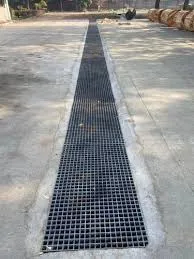
-
 Afrikaans
Afrikaans -
 Albanian
Albanian -
 Amharic
Amharic -
 Arabic
Arabic -
 Armenian
Armenian -
 Azerbaijani
Azerbaijani -
 Basque
Basque -
 Belarusian
Belarusian -
 Bengali
Bengali -
 Bosnian
Bosnian -
 Bulgarian
Bulgarian -
 Catalan
Catalan -
 Cebuano
Cebuano -
 China
China -
 China (Taiwan)
China (Taiwan) -
 Corsican
Corsican -
 Croatian
Croatian -
 Czech
Czech -
 Danish
Danish -
 Dutch
Dutch -
 English
English -
 Esperanto
Esperanto -
 Estonian
Estonian -
 Finnish
Finnish -
 French
French -
 Frisian
Frisian -
 Galician
Galician -
 Georgian
Georgian -
 German
German -
 Greek
Greek -
 Gujarati
Gujarati -
 Haitian Creole
Haitian Creole -
 hausa
hausa -
 hawaiian
hawaiian -
 Hebrew
Hebrew -
 Hindi
Hindi -
 Miao
Miao -
 Hungarian
Hungarian -
 Icelandic
Icelandic -
 igbo
igbo -
 Indonesian
Indonesian -
 irish
irish -
 Italian
Italian -
 Japanese
Japanese -
 Javanese
Javanese -
 Kannada
Kannada -
 kazakh
kazakh -
 Khmer
Khmer -
 Rwandese
Rwandese -
 Korean
Korean -
 Kurdish
Kurdish -
 Kyrgyz
Kyrgyz -
 Lao
Lao -
 Latin
Latin -
 Latvian
Latvian -
 Lithuanian
Lithuanian -
 Luxembourgish
Luxembourgish -
 Macedonian
Macedonian -
 Malgashi
Malgashi -
 Malay
Malay -
 Malayalam
Malayalam -
 Maltese
Maltese -
 Maori
Maori -
 Marathi
Marathi -
 Mongolian
Mongolian -
 Myanmar
Myanmar -
 Nepali
Nepali -
 Norwegian
Norwegian -
 Norwegian
Norwegian -
 Occitan
Occitan -
 Pashto
Pashto -
 Persian
Persian -
 Polish
Polish -
 Portuguese
Portuguese -
 Punjabi
Punjabi -
 Romanian
Romanian -
 Russian
Russian -
 Samoan
Samoan -
 Scottish Gaelic
Scottish Gaelic -
 Serbian
Serbian -
 Sesotho
Sesotho -
 Shona
Shona -
 Sindhi
Sindhi -
 Sinhala
Sinhala -
 Slovak
Slovak -
 Slovenian
Slovenian -
 Somali
Somali -
 Spanish
Spanish -
 Sundanese
Sundanese -
 Swahili
Swahili -
 Swedish
Swedish -
 Tagalog
Tagalog -
 Tajik
Tajik -
 Tamil
Tamil -
 Tatar
Tatar -
 Telugu
Telugu -
 Thai
Thai -
 Turkish
Turkish -
 Turkmen
Turkmen -
 Ukrainian
Ukrainian -
 Urdu
Urdu -
 Uighur
Uighur -
 Uzbek
Uzbek -
 Vietnamese
Vietnamese -
 Welsh
Welsh -
 Bantu
Bantu -
 Yiddish
Yiddish -
 Yoruba
Yoruba -
 Zulu
Zulu
Different Types of Jackhammers and Their Uses in Construction Industry
Types of Jackhammers
Jackhammers, also known as pneumatic drills or demolition hammers, are powerful tools primarily used for breaking concrete, asphalt, and other tough materials. They are essential in construction and demolition sites due to their efficiency and strength. While there are various types of jackhammers, they can generally be categorized based on their power source and design. Understanding these types can help contractors and DIY enthusiasts choose the right tool for their specific needs.
1. Pneumatic Jackhammers
Pneumatic jackhammers are the most commonly used type in construction. They are powered by compressed air, which is supplied by an air compressor. These jackhammers are known for their high power-to-weight ratio, making them ideal for heavy-duty applications such as breaking up concrete and asphalt. Typical pneumatic models are relatively lightweight, which provides more maneuverability for the user. However, the need for an external air compressor can limit their use in remote locations without access to power sources.
2
. Electric JackhammersElectric jackhammers are powered by electricity, either through a cord or a rechargeable battery. They are often utilized in residential projects, small-scale demolition, or for smaller tasks like removing tiles or breaking up sidewalks. Electric models tend to be quieter than pneumatic ones and are easier to operate since they do not require an air compressor. They are also more suitable for indoor work due to their reduced noise and vibration levels. However, electric jackhammers may not deliver the same amount of power as their pneumatic counterparts, making them less effective for extensive demolition work.
types of jackhammers

3. Hydraulic Jackhammers
Hydraulic jackhammers work on the principle of hydraulic pressure. These tools are typically used in industrial settings where immense force is required. They are known for their exceptional power and efficiency, making them ideal for large-scale construction or demolition projects. Hydraulic models often come equipped with various attachments, allowing for greater versatility in different applications. However, they require a hydraulic power source, which may not be readily available on all job sites.
4. Gas-Powered Jackhammers
Gas-powered jackhammers operate using gasoline or other fuels, offering a portable option without the need for electricity or air compressors. These jackhammers are favored for their mobility, making them ideal for outdoor work where electricity isn't accessible. They deliver substantial power, making them suitable for various demolition tasks. However, gas-powered models can be heavier and produce more noise and vibration, which may not be suitable for prolonged use.
Conclusion
In conclusion, choosing the right type of jackhammer depends on the specific requirements of the task at hand. Pneumatic jackhammers excel in heavy-duty applications, while electric models are perfect for smaller tasks and indoor work. Hydraulic jackhammers are best suited for industrial projects demanding high power, and gas-powered options offer portability for outdoor use. By understanding the strengths and limitations of each type, users can select the most effective tool for their needs, ensuring efficiency and safety on the job.
Latest news
-
Exploring the Benefits of Top Hammer Drifter Rods for Enhanced Drilling PerformanceNewsJun.10,2025
-
High-Precision Fiberglass Winding Machine for GRP/FRP Pipe Production – Reliable & Efficient SolutionsNewsJun.10,2025
-
FRP Pipes & Fittings for Shipbuilding - Corrosion-Resistant & LightweightNewsJun.09,2025
-
Premium FRP Flooring Solutions Durable & Slip-ResistantNewsJun.09,2025
-
Premium Fiberglass Rectangular Tanks Durable & Lightweight SolutionNewsJun.09,2025
-
Tapered Drill String Design Guide Durable Performance & UsesNewsJun.09,2025









